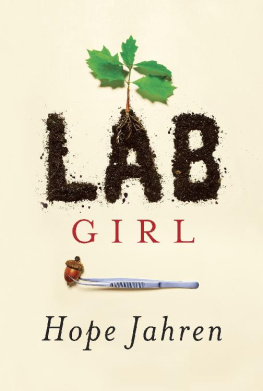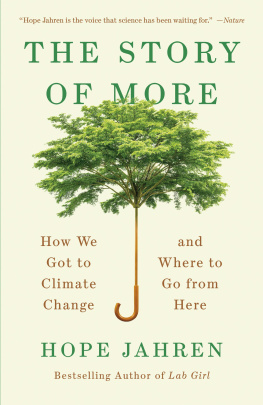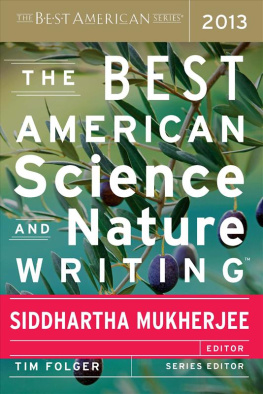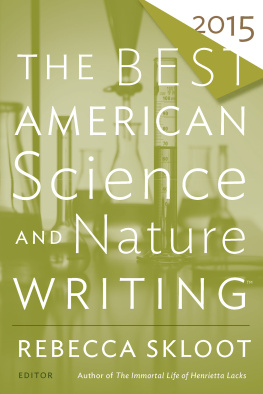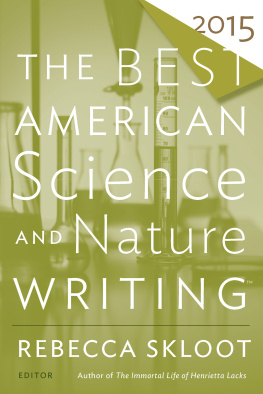sorry something went wrong loading your content. Check the table of contents or try paging forward. Or contact us at support@bookshout.com
sorry something went wrong loading your content. Check the table of contents or try paging forward. Or contact us at support@bookshout.com
sorry something went wrong loading your content. Check the table of contents or try paging forward. Or contact us at support@bookshout.com
sorry something went wrong loading your content. Check the table of contents or try paging forward. Or contact us at support@bookshout.com
sorry something went wrong loading your content. Check the table of contents or try paging forward. Or contact us at support@bookshout.com
Part I
Emergent Fields
sorry something went wrong loading your content. Check the table of contents or try paging forward. Or contact us at support@bookshout.com
sorry something went wrong loading your content. Check the table of contents or try paging forward. Or contact us at support@bookshout.com
SARAH EVERTS
The Art of Saving Relics
FROM Scientific American
These suits were built to last. They were pristine white and composed of 20-plus layers of cutting-edge materials handcrafted into a 180-pound frame of armor. They protected the wearers from temperatures that fluctuated between 300 and 300 degrees Fahrenheit and from low atmospheric pressure that could boil away someones blood. On a July day in 1969, the world watched intently as astronaut Neil Armstrong, wearing one of these garments, stepped off a ladder and onto a dusty, alien terrain, forever changing the landscape both of the moon and of human history. Few symbols of vision and achievement are more powerful than the Apollo mission spacesuits.
Back on Earth, the iconic garments found new lives as museum pieces, drawing millions to see them at the National Air and Space Museum in Washington, D.C. And staff members there have found, to their surprise, that the suits need their own life support. They are falling apart.
Last year Lisa Young, a conservator at the museum, noticed that a white, foggy bloom was beginning to creep across the transparent fishbowl helmets and that their smooth, curved surface was beginning to crack. It is really frustrating, Young says. We had thought they were relatively stable. There had been warning signs of suit trouble, though. The neoprene pressure bladders that kept astronauts bodies from exploding in the vacuum of space began crumbling years ago, releasing acidic gases. Anybody who has worked with the spacesuits knows their smell, Young says. Id describe it as slightly pungent sweet chlorine. And an orange-brown sticky stain began appearing on the exterior white fabric.
The trouble is the construction material: plastic. Most people think plastics last forever, which makes them a bane to the environment. But although the repeating units of carbon, oxygen, hydrogen, and other elements in plastics have a long lifetime, the overall chainssynthetic polymersdo not age well. Light conspires with oxygen and temperature to weaken the bonds that hold the units together. Then chemicals added to plastics to make them bendable or colorful migrate outward, making the surface sticky and wet and perfect for attracting dirt. The polycarbonate spacesuit visor, Young thinks, was leaching out a substance added to make it easier to shape.
Priceless 20th-century art is in serious trouble as well. In that era, Andy Warhol, David Hockney, and Mark Rothko all used acrylic painta plastic polymer popularized in the 1940s as an alternative to traditional oil paint. Plastic is, in fact, a building block of much of our recent cultural heritage, including important designer furniture, archival film, crash-test dummies, the worlds first Lego pieces, and Bakelite jewelry, as well as the plastic sculptures made by the pop-art movement. We now know that objects made of plastic are some of the most vulnerable in museum and gallery collections, says Yvonne Shashoua, a conservation scientist at the National Museum of Denmark and one of the first cultural heritage researchers to study plastic degradation.
The conservation field is now racing against time, trying to keep pace with the materials unexpectedly rapid deterioration. Conservators have identified the most trouble-prone plastics. Scientists are developing new tools to diagnose plastic degradation before it becomes visible to the human eyefor example, by measuring the molecules wafting off artifacts. Researchers are also devising new strategies for freshening up precious plastic art without harming it, using everything from cleaning solutions called microemulsions to polyester microfibers that gently remove dirt.
Degrading Denial
The realization that plastics were a problem dawned slowly. For most of the 20th century the museum world was afflicted with plastics denial syndrome, Shashoua says. Nobody thought that plastic objects in their collections would degrade. In fact, some conservators were so enamored with plastic during its heyday of the 1950s, 1960s, and 1970s that they used the polymers in ill-advised ways themselves. For example, conservators laminated Belgiums oldest parchment, the Codex Eyckensis from the eighth century A.D. , with PVC plastic for protection. Decades later this laminate had to be painstakingly separated from the parchment because changes in the PVC began exacerbating the ancient documents demise.
Crash-test dummies first made Shashoua think plastic was not forever. She had grown up visiting Londons Science Museum, where dummies built in the 1970s to better understand the human toll of automobile collisions were on display. The mock bodiesamong the first of their kindhave a metal frame skeleton enveloped by medical gelatin that has been sculpted into human form and then covered by a layer of protective PVC. During impact tests, encapsulated red paint would bleed out of the gelatin bodies and get caught underneath the PVC layer wherever the dummy had smashed against a car frame during collision experiments. The red wounds indicated the bodys most vulnerable regions.
As the decades passed, these same crash-test dummies in the museum began bleeding again. Shashoua was shocked to see that the PVC covering these artifacts was collapsing, dripping so much wet, sticky muck that museum staff had set up petri dishes in the showcase to collect the mess. When Shashoua was put in charge of cleaning the artifacts in 2011, she noticed that the dummies sculpted contours were losing their definition as the PVC plastic collapsed; in some parts the red paint mixed with the wounded plastic, giving the goo dripping from the dummies an eerily realistic brownish red tinge.
This dripping messand in fact all kinds of plastic degradationowes its start to oxygen. With help from light and heat, the gas rips off the electrons from the long polymer chains that entwine to form a plastic object. Losing electrons can weaken and break chemical bonds in a plastic, undermining its structure. Essentially the long chains break up into smaller constituent molecules called monomers. In the case of the crash-test dummies, this destabilization allowed ingredients called plasticizers, which are added to make the plastic supple, to pour out.
When the museum world began to realize that plastics were not invincible to time, those tasked with protecting plastic art and artifacts had to start from scratch to understand in detail why their collections were breaking down, says Matija Strli, a conservation scientist at the Institute for Sustainable Heritage at University College London. Although there was extensive literature on polymer production, this research stopped at the end of a plastic objects expected lifetimeright when conservators get interested, Strli says. Polymer makers had probably expected that old plastic objects would get tossed away, not delivered to museums.
Next page


